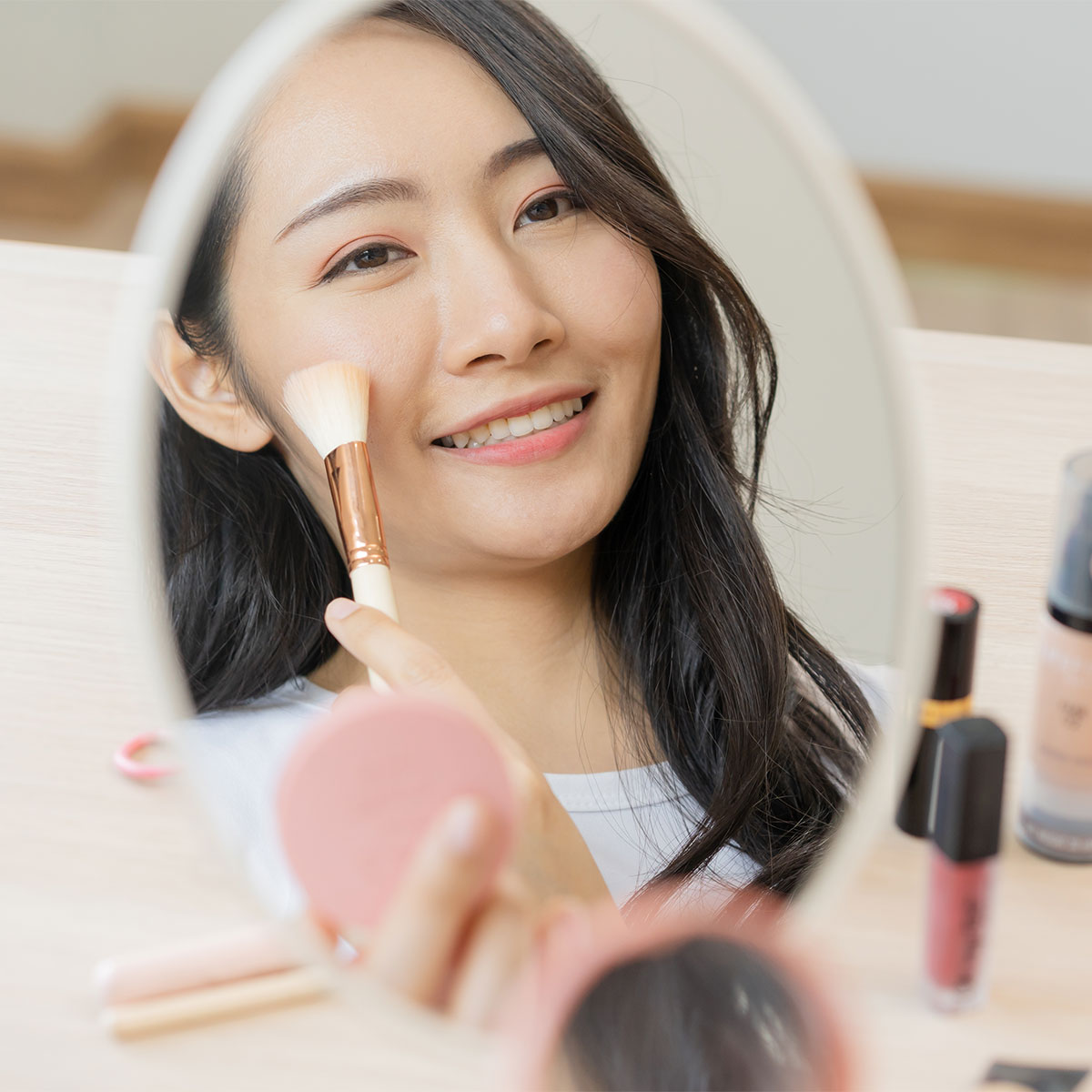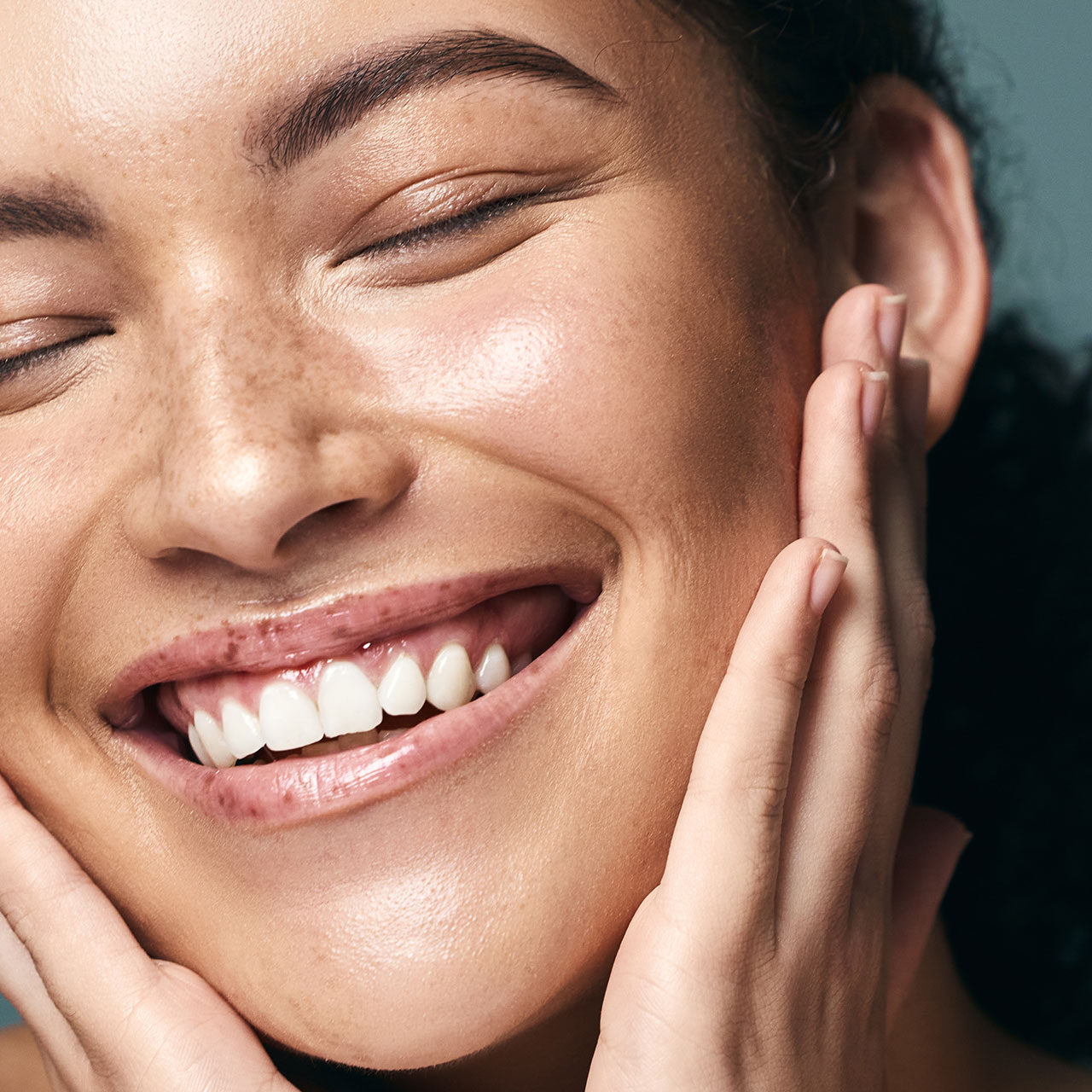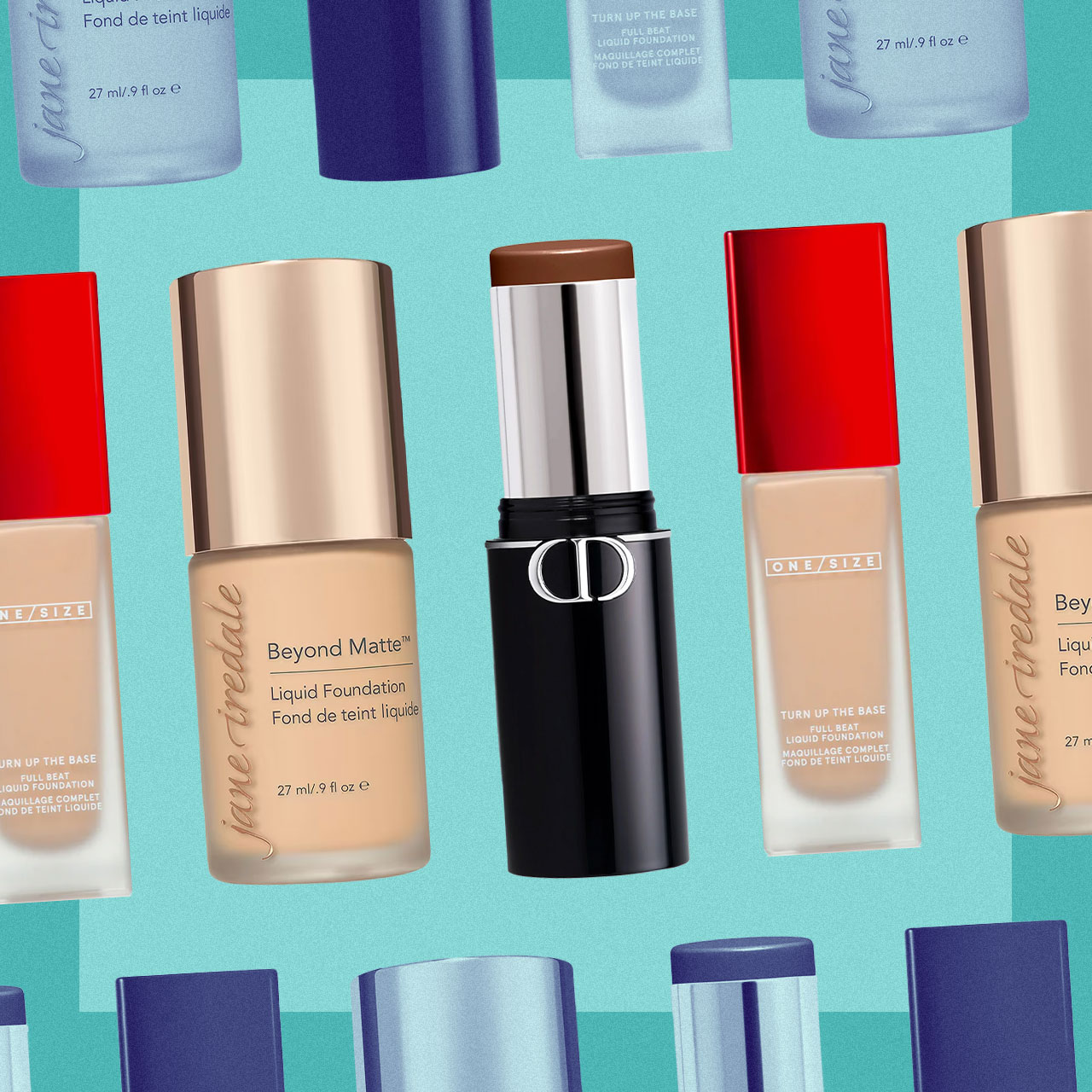Some concealers just sit there. They add a bit of color to your face, are difficult to blend, and — worst of all — do absolutely nothing to camouflage pimples and other spots. You may be wondering what is even the point of applying yet another layer of makeup if it isn’t going to get the job done properly? Before you slam the actual product itself, remember: concealer can be a true game changer as far as makeup is concerned. But unless you are selecting the right color to conceal redness, the product itself can only do so much to help.
Before you buy yet another green color corrector to help tone down redness, Beauty Expert Caleb Backe at Maple Holistics has a suggestion: consider a different concealer shade than you usually do — one that can actually hide dark spots and redness.


The Shade: Salmon
It’s always important to select a concealer that is close to your natural skin tone so that it blends in well. But before you even get to that step, you’ll want to select a tone in a specific family of shades that is known for its ability to hide redness and dark spots: salmon.
“The color properties of salmon make it an effective shade for concealing dark spots and redness,” Backe says. “This is because the range of salmon color falls between peachy-pink and orange, making it ideal for neutralizing blue, purple, and green undertones that often contribute to dark spots and under-eye circles.”

Backe dives into the specifics of why salmon is the perfect concealer shade:
“Firstly, it counteracts blue and purple tones, which are opposite colors on the color wheel. As a result, salmon-colored concealer can cancel out these tones, making it suitable for covering under-eye circles with a blue or purple tint,” he explains.
Secondly, he says, it neutralizes green tones that contribute to redness caused by acne or rosacea. “The orange tones in salmon work to counteract the green, creating a more uniform complexion.”
And, lastly, salmon-colored concealer can brighten and warm up the skin, thanks to its peachy-pink tones. “This provides a natural and healthy glow that can make the complexion appear more youthful and radiant,” Backe says. “To achieve a natural and seamless look, it's important to blend the salmon-colored concealer into the skin and choose a shade that matches your skin tone.”

Which concealer shades work best on different skin tones?
Now that you know salmon is a concealer shade worth honing in on to blur those little spots on your face that annoy you, the next step is tailoring your concealer pick so that it blends in well with your skin tone.
Fair skin: “Concealers with a light peach or pink undertone are most suitable for fair skin tones,” Backe says. “These shades can effectively neutralize the bluish-purple tones that are often present under the eyes. It is advisable to avoid using shades that are too dark as they can result in a grayish or ashy appearance in the under-eye area.”
Light to medium skin: Light to medium skin tones are best suited with a concealer that has a neutral to warm undertone, Backe says. “It is recommended to select shades that are either a perfect match or slightly lighter than your skin tone. Avoid using shades that are too cool or too warm, as they can result in a lackluster or artificial look in the under-eye area.”
Olive skin: Concealers that have a yellow or golden undertone are ideal for medium to olive skin tones. “These shades effectively neutralize the bluish-purple tones that are often present under the eyes and can also help to enhance the overall complexion,” Backe says. “It is advisable to steer clear of shades that are too cool or too warm, as they can result in an ashy or lackluster look in the under-eye area.”
Deep-toned skin: If you have deeper-toned skin, concealer that has a red or orange undertone will do the most to blur out spots. “These shades are effective in neutralizing the blue and purple tones that are often present under the eyes and can also brighten up the overall complexion,” Backe says. “It is important to avoid shades that are either too light or too cool, as they can give a grayish or ashy appearance to the under-eye area.”

Application tips
There isn’t one right way to apply your concealer, and each method has its own pros and cons, Backe says.
“One of the easiest methods is using your fingers, which warms up the product and helps with blending,” Backe says. “To apply, dab a small amount of concealer onto the under-eye area or blemish and blend it in with your ring finger. Another popular tool for applying concealer is the Beauty Blender, which helps to blend the product seamlessly into the skin and prevent a cakey appearance. Simply wet the sponge, squeeze out the excess water, and tap the concealer onto the skin.”
For more precise application, Backe says a concealer brush is ideal, allowing for control over the amount of product applied. “Use small circular motions to blend in the concealer,” he suggests. “Finally, a dual-ended concealer brush provides versatility with a flat brush on one end for applying the product and a fluffy brush on the other end for blending. To use, apply a small amount of concealer to the flat brush and blend it in with the fluffy brush for a natural-looking finish.”
If you’ve been frustrated with concealer up until this point and are ready to throw the towel in, push aside your beige and gold-tinted concealers and try a salmon-colored concealer that blends with your skin tone. This may be the small switch needed to see a big difference in your skin.


























